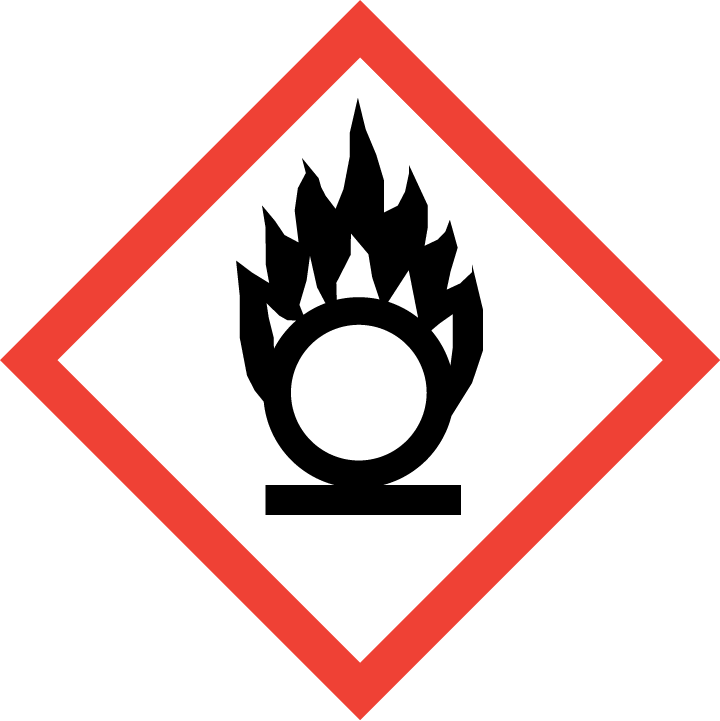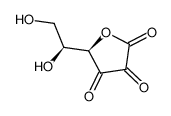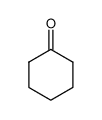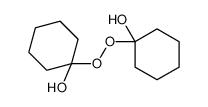1.Identification
1.1 GHS Product identifier
| Product name | hydrogen peroxide |
|---|
1.2 Other means of identification
| Product number | - |
|---|---|
| Other names | Hydrogen peroxide |
1.3 Recommended use of the chemical and restrictions on use
| Identified uses | For industry use only. Antimicrobial Actives;Oxidants and Oxidant Stabilizers |
|---|---|
| Uses advised against | no data available |
1.4 Supplier's details
| Company | MOLBASE (Shanghai) Biotechnology Co., Ltd. |
|---|---|
| Address | Floor 4 & 5, Building 12, No. 1001 North Qinzhou Road, Xuhui District, Shanghai, China |
| Telephone | +86(21)64956998 |
| Fax | +86(21)54365166 |
1.5 Emergency phone number
| Emergency phone number | +86-400-6021-666 |
|---|---|
| Service hours | Monday to Friday, 9am-5pm (Standard time zone: UTC/GMT +8 hours). |
2.Hazard identification
2.1 Classification of the substance or mixture
Oxidizing liquids, Category 1
Acute toxicity - Oral, Category 4
Skin corrosion, Category 1A
Acute toxicity - Inhalation, Category 4
2.2 GHS label elements, including precautionary statements
| Pictogram(s) |    |
|---|---|
| Signal word | Danger |
| Hazard statement(s) | H271 May cause fire or explosion; strong oxidizer H302 Harmful if swallowed H314 Causes severe skin burns and eye damage H332 Harmful if inhaled |
| Precautionary statement(s) | |
| Prevention | P210 Keep away from heat, hot surfaces, sparks, open flames and other ignition sources. No smoking. P220 Keep away from clothing and other combustible materials. P280 Wear protective gloves/protective clothing/eye protection/face protection. P283 Wear fire resistant or flame retardant clothing. P264 Wash ... thoroughly after handling. P270 Do not eat, drink or smoke when using this product. P260 Do not breathe dust/fume/gas/mist/vapours/spray. P261 Avoid breathing dust/fume/gas/mist/vapours/spray. P271 Use only outdoors or in a well-ventilated area. |
| Response | P306+P360 IF ON CLOTHING: Rinse immediately contaminated clothing and skin with plenty of water before removing clothes. P371+P380+P375 In case of major fire and large quantities: Evacuate area. Fight fire remotely due to the risk of explosion. P370+P378 In case of fire: Use ... to extinguish. P301+P312 IF SWALLOWED: Call a POISON CENTER/doctor/…if you feel unwell. P330 Rinse mouth. P301+P330+P331 IF SWALLOWED: Rinse mouth. Do NOT induce vomiting. P303+P361+P353 IF ON SKIN (or hair): Take off immediately all contaminated clothing. Rinse skin with water [or shower]. P363 Wash contaminated clothing before reuse. P304+P340 IF INHALED: Remove person to fresh air and keep comfortable for breathing. P310 Immediately call a POISON CENTER/doctor/… P321 Specific treatment (see ... on this label). P305+P351+P338 IF IN EYES: Rinse cautiously with water for several minutes. Remove contact lenses, if present and easy to do. Continue rinsing. P312 Call a POISON CENTER/doctor/…if you feel unwell. |
| Storage | P420 Store separately. P405 Store locked up. |
| Disposal | P501 Dispose of contents/container to ... |
2.3 Other hazards which do not result in classification
none
3.Composition/information on ingredients
3.1 Substances
| Chemical name | Common names and synonyms | CAS number | EC number | Concentration |
|---|---|---|---|---|
| hydrogen peroxide | hydrogen peroxide | 7722-84-1 | none | 100% |
4.First-aid measures
4.1 Description of necessary first-aid measures
General advice
Consult a physician. Show this safety data sheet to the doctor in attendance.
If inhaled
Fresh air, rest. Half-upright position. Refer for medical attention.
In case of skin contact
First rinse with plenty of water for at least 15 minutes, then remove contaminated clothes and rinse again. Refer for medical attention .
In case of eye contact
First rinse with plenty of water for several minutes (remove contact lenses if easily possible), then refer for medical attention.
If swallowed
Rinse mouth. Do NOT induce vomiting. Refer for medical attention .
4.2 Most important symptoms/effects, acute and delayed
Excerpt from ERG Guide 143 [Oxidizers (Unstable)]: TOXIC; inhalation, ingestion or contact (skin, eyes) with vapors, dusts or substance may cause severe injury, burns or death. Fire may produce irritating and/or toxic gases. Toxic fumes or dust may accumulate in confined areas (basement, tanks, hopper/tank cars, etc.). Runoff from fire control or dilution water may cause pollution. (ERG, 2016)
Excerpt from ERG Guide 140 [Oxidizers]: Inhalation, ingestion or contact (skin, eyes) with vapors or substance may cause severe injury, burns or death. Fire may produce irritating, corrosive and/or toxic gases. Runoff from fire control or dilution water may cause pollution. (ERG, 2016)
Excerpt from ERG Guide 140 [Oxidizers]: Inhalation, ingestion or contact (skin, eyes) with vapors or substance may cause severe injury, burns or death. Fire may produce irritating, corrosive and/or toxic gases. Runoff from fire control or dilution water may cause pollution. (ERG, 2016)
Strong irritant to skin, eyes, and mucous membranes. (EPA, 1998)
4.3 Indication of immediate medical attention and special treatment needed, if necessary
Basic treatment: Establish a patent airway. Suction if necessary. Watch for signs of respiratory insufficiency and assist ventilations if necessary. Administer oxygen by nonrebreather mask at 10 to 15 L/min. Monitor for pulmonary edema and treat if necessary ... . Monitor for shock and treat if necessary ... . For eye contamination, flush eyes immediately with water. Irrigate each eye continuously with normal saline during transport ... . Do not use emetics. For ingestion, rinse mouth and administer 5 ml/kg up to 200 ml of water for dilution if the patient can swallow, has a strong gag reflex, and does not drool ... . Do not attempt to neutralize because of exothermic reaction. Cover skin burns with dry, sterile dressings after decontamination ... . /Oxidizers/
5.Fire-fighting measures
5.1 Extinguishing media
Suitable extinguishing media
Fires caused by the compound are best controlled by large amounts of water. Chemical extinguishers should be used as they hasten decomposition of the peroxide. Fire fighters should wear goggles and self contained breathing apparatus.
5.2 Specific hazards arising from the chemical
Excerpt from ERG Guide 143 [Oxidizers (Unstable)]: May explode from friction, heat or contamination. These substances will accelerate burning when involved in a fire. May ignite combustibles (wood, paper, oil, clothing, etc.). Some will react explosively with hydrocarbons (fuels). Containers may explode when heated. Runoff may create fire or explosion hazard. (ERG, 2016)
Excerpt from ERG Guide 140 [Oxidizers]: These substances will accelerate burning when involved in a fire. Some may decompose explosively when heated or involved in a fire. May explode from heat or contamination. Some will react explosively with hydrocarbons (fuels). May ignite combustibles (wood, paper, oil, clothing, etc.). Containers may explode when heated. Runoff may create fire or explosion hazard. (ERG, 2016)
Excerpt from ERG Guide 140 [Oxidizers]: These substances will accelerate burning when involved in a fire. Some may decompose explosively when heated or involved in a fire. May explode from heat or contamination. Some will react explosively with hydrocarbons (fuels). May ignite combustibles (wood, paper, oil, clothing, etc.). Containers may explode when heated. Runoff may create fire or explosion hazard. (ERG, 2016)
Spontaneous ignition may occur when contact with combustible materials is made. Oxygen released in decomposition will promote combustion. Fires can be of the flaring type but are not explosive unless confined. Vapor concentration greater than 40 percent by weight can be decomposed explosively at 1 atmosphere pressure. Severe explosion hazard when it is exposed to heat, mechanical impact, detonation of a blasting cap, or caused to decompose catalytically. Decomposition can build up large pressures of oxygen and water which may then burst explosively. Avoid oxidizable materials including iron, copper, brass, bronze, chromium, zinc, lead, manganese, silver, catalytic metals. Avoid mechanical impact, uncovering the container, contact with combustible materials, light, temperatures above 95F, hot wires, catalytic impurities. (EPA, 1998)
5.3 Special protective actions for fire-fighters
Wear self-contained breathing apparatus for firefighting if necessary.
6.Accidental release measures
6.1 Personal precautions, protective equipment and emergency procedures
Use personal protective equipment. Avoid dust formation. Avoid breathing vapours, mist or gas. Ensure adequate ventilation. Evacuate personnel to safe areas. Avoid breathing dust. For personal protection see section 8.
6.2 Environmental precautions
Personal protection: chemical protection suit including self-contained breathing apparatus. Ventilation. Do NOT let this chemical enter the environment. Wash away spilled liquid with plenty of water. Do NOT absorb in saw-dust or other combustible absorbents.
6.3 Methods and materials for containment and cleaning up
Dilute and drain into the sewer with abundant water.
7.Handling and storage
7.1 Precautions for safe handling
Avoid contact with skin and eyes. Avoid formation of dust and aerosols. Avoid exposure - obtain special instructions before use.Provide appropriate exhaust ventilation at places where dust is formed. For precautions see section 2.2.
7.2 Conditions for safe storage, including any incompatibilities
Separated from combustible substances, reducing agents, strong bases, metals and food and feedstuffs. Cool. Keep in the dark. Store in vented containers. Store only if stabilized.STORE IN ORIGINAL CLOSED CONTAINER. BE SURE THAT CONTAINER VENT IS WORKING... DO NOT ADD ANY OTHER PRODUCT TO CONTAINERS. WHEN EMPTY, RINSE THOROUGHLY WITH CLEAN WATER. /30% SOLN/
8.Exposure controls/personal protection
8.1 Control parameters
Occupational Exposure limit values
Recommended Exposure Limit: 10 Hr Time-Weighted Avg: 1 ppm (1.4 mg/cu m).
Biological limit values
no data available
8.2 Appropriate engineering controls
Handle in accordance with good industrial hygiene and safety practice. Wash hands before breaks and at the end of workday.
8.3 Individual protection measures, such as personal protective equipment (PPE)
Eye/face protection
Safety glasses with side-shields conforming to EN166. Use equipment for eye protection tested and approved under appropriate government standards such as NIOSH (US) or EN 166(EU).
Skin protection
Wear impervious clothing. The type of protective equipment must be selected according to the concentration and amount of the dangerous substance at the specific workplace. Handle with gloves. Gloves must be inspected prior to use. Use proper glove removal technique(without touching glove's outer surface) to avoid skin contact with this product. Dispose of contaminated gloves after use in accordance with applicable laws and good laboratory practices. Wash and dry hands. The selected protective gloves have to satisfy the specifications of EU Directive 89/686/EEC and the standard EN 374 derived from it.
Respiratory protection
Wear dust mask when handling large quantities.
Thermal hazards
no data available
9.Physical and chemical properties
| Physical state | Very light blue color; colorless in solution. slightly sharp odor. |
|---|---|
| Colour | Colorless liquid |
| Odour | ODORLESS, OR HAVING AN ODOR RESEMBLING THAT OF OZONE |
| Melting point/ freezing point | −0.43 °C |
| Boiling point or initial boiling point and boiling range | 126°C |
| Flammability | Noncombustible Liquid, but a powerful oxidizer.Not combustible. The substance may ignite combustible materials. Many reactions may cause fire or explosion. |
| Lower and upper explosion limit / flammability limit | no data available |
| Flash point | Non-flammable |
| Auto-ignition temperature | Not flammable. (USCG, 1999) |
| Decomposition temperature | no data available |
| pH | Weak acid; H2O2 concn wt% = 35, 50, 70, 90; corresponding true pH: 4.6, 4.3, 4.4, 5.1 |
| Kinematic viscosity | 1.245 centipoises (liquid) |
| Solubility | In water:miscible |
| Partition coefficient n-octanol/water (log value) | -1.36 |
| Vapour pressure | 23.3 mm Hg ( 30 °C) |
| Density and/or relative density | 1.11g/mLat 20°C |
| Relative vapour density | 1 (vs air) |
| Particle characteristics | no data available |
10.Stability and reactivity
10.1 Reactivity
no data available
10.2 Chemical stability
HYDROGEN PEROXIDE IS A VERY UNSTABLE COMPOUND THAT BREAKS DOWN READILY TO FORM MOLECULAR OXYGEN AND WATER.
10.3 Possibility of hazardous reactions
DANGEROUS/FIRE HAZARD/ BY CHEMICAL REACTION WITH FLAMMABLE MATERIALS. HYDROGEN PEROXIDE IS A POWERFUL OXIDIZER, PARTICULARLY IN THE CONCENTRATED STATE. IT IS IMPORTANT TO KEEP CONTAINERS ... COVERED BECAUSE UNCOVERED CONTAINERS ... MORE PRONE TO REACT WITH FLAMMABLE VAPORS, GASES, ETC.; ... IF UNCOVERED, THE WATER FROM HYDROGEN PEROXIDE SOLN CAN EVAPORATE, CONCENTRATING THE /REMAINING/ MATERIAL AND THUS INCREASING THE FIRE HAZARD.HYDROGEN PEROXIDE, AQUEOUS SOLUTION, STABILIZED, WITH MORE THAN 60% HYDROGEN PEROXIDE is a powerful oxidizing agent. Will react or decompose violently and exothermically with readily oxidizable materials or alkaline substances. May decompose violently in contact with iron, copper, chromium, and most other metals or their salts, which act as catalysts for this reaction, and with ordinary dust (which frequently contain rust, also a catalyst for this reaction). Stabilization operates against such reactions, but does not eliminate their possibility. Contact with combustible materials may result in their spontaneous ignition. Solutions containing over 30% hydrogen peroxide can detonate when mixed with organic solvents (such as acetone, ethanol, glycerol); the violence of the explosion increases with increasing concentration of the hydrogen peroxide. Concentration of solutions of hydrogen peroxide under vacuum led to violent explosions when the concentration was sufficiently high (>90%) [Bretherick 2nd ed., 1979]. Mixtures of aqueous hydrogen peroxide with 1-phenyl-2-methyl propyl alcohol tend to explode if acidified with 70% sulfuric acid [Chem. Eng. News 45(43):73(1967); J, Org. Chem. 28:1893(1963)]. Hydrogen selenide and hydrogen peroxide undergo a very rapid reaction [Mellor 1:941(1946-1947)].
10.4 Conditions to avoid
no data available
10.5 Incompatible materials
Oxidizable materials, iron, copper, brass, bronze, chromium, zinc, lead, silver, manganese [Note: Contact with combustible material may result in SPONTANEOUS combustion].
10.6 Hazardous decomposition products
Decomposition continuously occurs even at a slow rate when the compound is inhibited, and thus it must be stored properly and in vented containers. High-strength hydrogen peroxide is a very high-energy material. When it decomposes to oxygen and water, large amounts of heat are liberated, leading to an increased rate of decomposition, since decomposition is accelerated by increases in temperature. This rate increases about 2.2 times per 10°C temperature increase between 20 and 100°C.
11.Toxicological information
Acute toxicity
- Oral: no data available
- Inhalation: no data available
- Dermal: no data available
Skin corrosion/irritation
no data available
Serious eye damage/irritation
no data available
Respiratory or skin sensitization
no data available
Germ cell mutagenicity
no data available
Carcinogenicity
Evaluation: There is inadequate evidence in humans for the carcinogenicity of hydrogen peroxide. There is limited evidence in experimental animals for the carcinogenicity of hydrogen peroxide. Overall evaluation: Hydrogen peroxide is not classifiable as to its carcinogenicity to humans (Group 3).
Reproductive toxicity
no data available
STOT-single exposure
no data available
STOT-repeated exposure
no data available
Aspiration hazard
no data available
12.Ecological information
12.1 Toxicity
- Toxicity to fish: no data available
- Toxicity to daphnia and other aquatic invertebrates: no data available
- Toxicity to algae: no data available
- Toxicity to microorganisms: no data available
12.2 Persistence and degradability
no data available
12.3 Bioaccumulative potential
no data available
12.4 Mobility in soil
no data available
12.5 Other adverse effects
no data available
13.Disposal considerations
13.1 Disposal methods
Product
The material can be disposed of by removal to a licensed chemical destruction plant or by controlled incineration with flue gas scrubbing. Do not contaminate water, foodstuffs, feed or seed by storage or disposal. Do not discharge to sewer systems.
Contaminated packaging
Containers can be triply rinsed (or equivalent) and offered for recycling or reconditioning. Alternatively, the packaging can be punctured to make it unusable for other purposes and then be disposed of in a sanitary landfill. Controlled incineration with flue gas scrubbing is possible for combustible packaging materials.
14.Transport information
14.1 UN Number
| ADR/RID: UN2014 | IMDG: UN2014 | IATA: UN2014 |
14.2 UN Proper Shipping Name
| ADR/RID: HYDROGEN PEROXIDE, AQUEOUS SOLUTION with not less than 20% but not more than 60% hydrogen peroxide (stabilized as necessary) |
| IMDG: HYDROGEN PEROXIDE, AQUEOUS SOLUTION with not less than 20% but not more than 60% hydrogen peroxide (stabilized as necessary) |
| IATA: HYDROGEN PEROXIDE, AQUEOUS SOLUTION with not less than 20% but not more than 60% hydrogen peroxide (stabilized as necessary) |
14.3 Transport hazard class(es)
| ADR/RID: 8 | IMDG: 8 | IATA: 8 |
14.4 Packing group, if applicable
| ADR/RID: Not dangerous goods. | IMDG: Not dangerous goods. | IATA: Not dangerous goods. |
14.5 Environmental hazards
| ADR/RID: no | IMDG: no | IATA: no |
14.6 Special precautions for user
no data available
14.7 Transport in bulk according to Annex II of MARPOL 73/78 and the IBC Code
no data available
15.Regulatory information
15.1 Safety, health and environmental regulations specific for the product in question
| Chemical name | Common names and synonyms | CAS number | EC number |
|---|---|---|---|
| hydrogen peroxide | hydrogen peroxide | 7722-84-1 | none |
| European Inventory of Existing Commercial Chemical Substances (EINECS) | Listed. | ||
| EC Inventory | Listed. | ||
| United States Toxic Substances Control Act (TSCA) Inventory | Listed. | ||
| China Catalog of Hazardous chemicals 2015 | Listed. | ||
| New Zealand Inventory of Chemicals (NZIoC) | Listed. | ||
| Philippines Inventory of Chemicals and Chemical Substances (PICCS) | Listed. | ||
| Vietnam National Chemical Inventory | Listed. | ||
| Chinese Chemical Inventory of Existing Chemical Substances (China IECSC) | Listed. | ||
16.Other information
Information on revision
| Creation Date | Aug 16, 2017 |
|---|---|
| Revision Date | Aug 16, 2017 |
Abbreviations and acronyms
- CAS: Chemical Abstracts Service
- ADR: European Agreement concerning the International Carriage of Dangerous Goods by Road
- RID: Regulation concerning the International Carriage of Dangerous Goods by Rail
- IMDG: International Maritime Dangerous Goods
- IATA: International Air Transportation Association
- TWA: Time Weighted Average
- STEL: Short term exposure limit
- LC50: Lethal Concentration 50%
- LD50: Lethal Dose 50%
- EC50: Effective Concentration 50%
References
- IPCS - The International Chemical Safety Cards (ICSC), website: http://www.ilo.org/dyn/icsc/showcard.home
- HSDB - Hazardous Substances Data Bank, website: https://toxnet.nlm.nih.gov/newtoxnet/hsdb.htm
- IARC - International Agency for Research on Cancer, website: http://www.iarc.fr/
- eChemPortal - The Global Portal to Information on Chemical Substances by OECD, website: http://www.echemportal.org/echemportal/index?pageID=0&request_locale=en
- CAMEO Chemicals, website: http://cameochemicals.noaa.gov/search/simple
- ChemIDplus, website: http://chem.sis.nlm.nih.gov/chemidplus/chemidlite.jsp
- ERG - Emergency Response Guidebook by U.S. Department of Transportation, website: http://www.phmsa.dot.gov/hazmat/library/erg
- Germany GESTIS-database on hazard substance, website: http://www.dguv.de/ifa/gestis/gestis-stoffdatenbank/index-2.jsp
- ECHA - European Chemicals Agency, website: https://echa.europa.eu/












